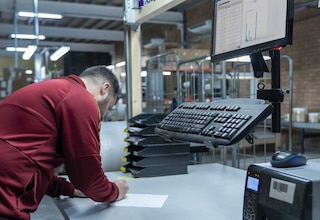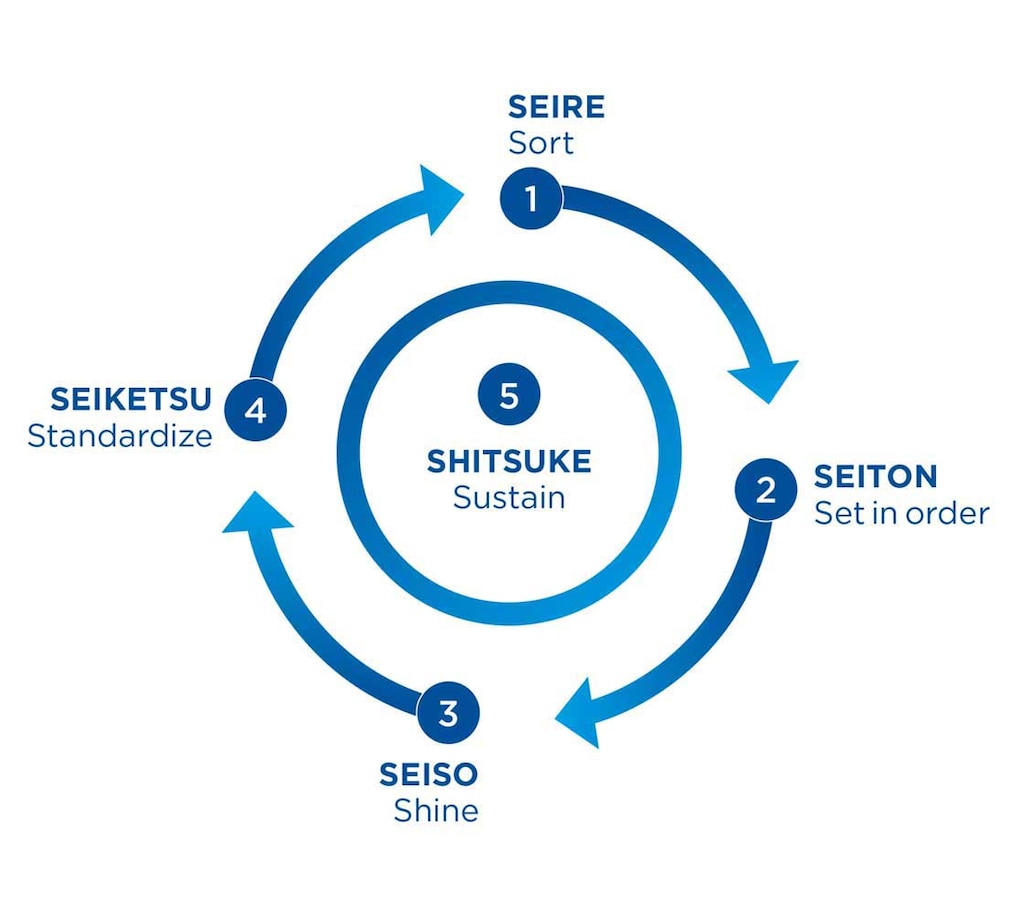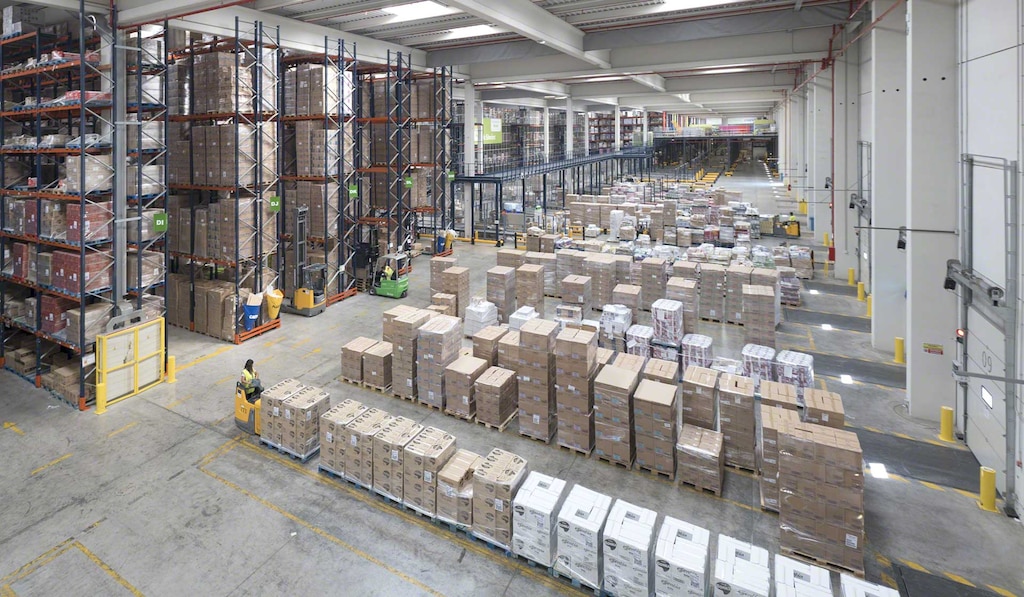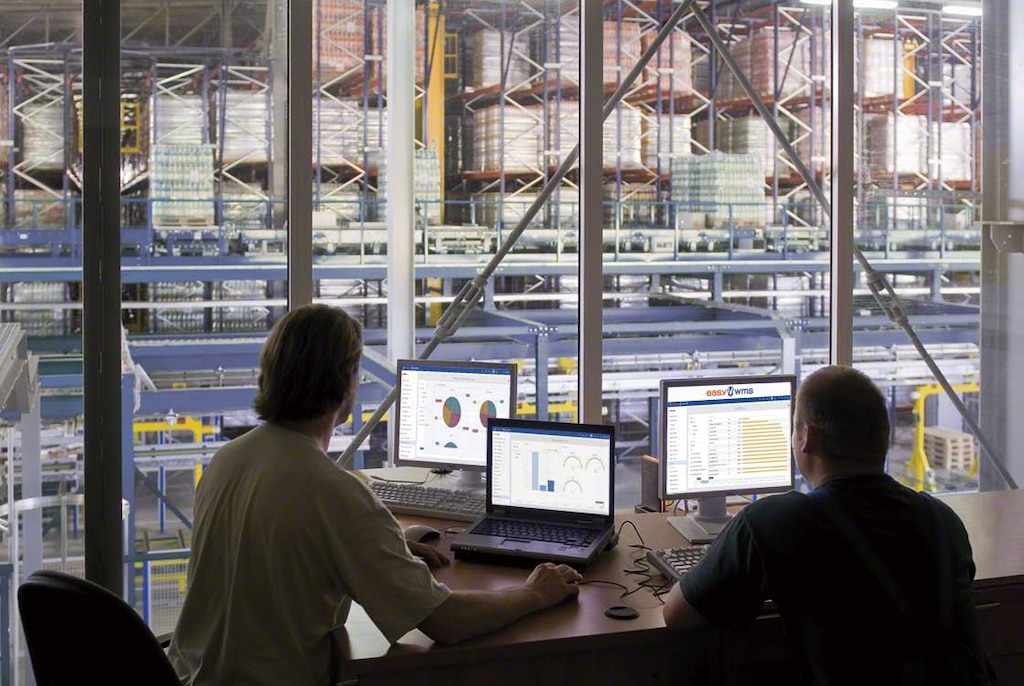
Continuous improvement: applications in logistics
Continuous improvement aims to enhance the quality and performance of a product or process through constant analysis of the elements involved. This technique of Japanese origin has become increasingly popular among Western companies. Continuous improvement ensures increased business efficiency, thanks to small yet continuous changes introduced to eliminate unproductive dynamics and standardise rules.
In this post, we analyse continuous improvement, its main strategies, and its applications in the logistics sector.
What’s continuous improvement?
Continuous improvement techniques are the set of strategies designed to perfect and optimise procedures, products, and services. It is implemented by means of minor adjustments made through in-depth knowledge of operations and data analysis.
There are various ways to apply continuous improvement strategies to boost an installation’s throughput. Nevertheless, the kaizen or 5S method has turned out to be one of the most popular because of its simplicity and effectiveness.
Continuous improvement through kaizen
Kaizen (“change for better” in Japanese) is a system developed by Japanese engineer Taiichi Ohno for automaker Toyota following the end of World War II. Its purpose was to boost the company’s competitiveness, putting it on par with companies in the US. Nowadays, however, it is considered a business management standard by companies all over the globe.
The kaizen method is based on the premise that, even if a process performs as it should, there is always room for improvement. Applied particularly to the production and logistics sectors, this strategy uses a set of procedures to analyse business function, detect inefficiencies, and implement changes. Everything revolves around five principles, known as 5S for their original Japanese names:
- Seire (sort): the first process of the kaizen method consists of examining the tasks to discern which add true value to the product or service (this is known as the gemba walk).
- Seiton (set in order): employees must have all the tools they need to be agile and productive within their reach. Applying Seiton means organising work teams to cut down on travel and inefficient movements.
- Seiso (shine): workplace cleanliness and the identification of errors are essential for making sure operators feel comfortable and work at their best.
- Seiketsu (standardise): after pinpointing mistakes, the necessary rules and standards will be established to enhance process efficiency.
- Shitsuke (sustain/self-discipline): this last phase is fundamental for the success of the previous four. It involves the commitment of the entire organisation to adopt the new rules in addition to a continuous improvement philosophy to increase the value of all operations carried out within the company.
In short, through 5S, the kaizen method is an ideal strategy for improving an organisation’s profitability, identifying and eliminating all inefficiencies, and, above all, promoting everything that adds value.

Other continuous improvement methods: from PDCA to Six Sigma
Besides 5S, there are other strategies and tools applicable to continuous improvement. Their priority is to achieve excellence in processes via the information they generate. Below are three more effective methods for standardising continuous improvement:
- The Deming Cycle or PDCA: PDCA is the acronym for “Plan, Do, Check, Act.” This cyclical strategy describes the four basic steps for detecting inefficiencies, planning solutions, and ultimately, improving the profitability of all processes carried out in the warehouse.
- Six Sigma: this continuous improvement technique consists of eliminating errors in deliveries of final products to customers. The objective of this strategy is to ensure no more than 3.4 defects per million opportunities, with defect meaning any incident that stands in the way of customer satisfaction.
- Lean methodology: the Lean strategy is based on locating all stages that don’t add value to the final product to, thus, obtain top quality merchandise.
To implement continuous improvement, you don’t have to choose one method over another. There is no single best technique, but rather, they are complementary, each with its advantages. All strategies can and should be used simultaneously. The goal is to always improve: reduce inefficiencies, introduce incremental changes, and guarantee that the new habits are adopted correctly throughout the company.

Waste: muda, mura, muri
Continuous improvement techniques incorporate constant process analysis to ensure maximum profitability at each stage. For example, the Japanese terms muda, mura, and muri comprise a strategy for identifying mistakes and waste in manufacturing.
This system, also known as the Toyota 3M model, is based on analysing errors and waste in a production process to, by means of organisational changes, manufacture without mistakes and guarantee the best experience for end customers. These are its three key concepts:
- Muda (waste): this refers to errors that consume resources and fail to add value to the final product. Originally, the Toyota method integrated seven types of waste normally seen in production centres: motion (regarding workers and equipment), inventory (excess items), defects (repetitive operations stemming from these), overproduction, waiting (in between production processes), overprocessing (procedures that don’t raise value), and transportation (inefficient means).
- Mura (unevenness): the production manager should find any kind of imbalance, interruption, or alteration in the workload that leads to additional costs on the production lines. To do so, it’s vital to closely monitor the throughput of the manufacturing processes to identify defects, errors, or noncompliance. So, how can these irregularities be resolved? By implementing methodologies that align production with demand, such as Kanban or just-in-time.
- Muri (overburden): the combination of muda and mura (waste and defects) leads to what the Japanese call muri, or stress. Poor planning causes operator fatigue and even bottlenecks on the production line.
Ultimately, applying the Toyota 3M method step by step does away with waste in production as well as disruptions and imbalances in the workload. All in all, by eliminating muda and mura, you’ll eradicate muri, in other words, stress and instability on the production lines.
Advantages of implementing continuous improvement in the warehouse
How can continuous improvement benefit day-to-day logistics activities in an installation? These are its primary plus points:
- Guarantee quality products/service: employing continuous improvement techniques ensures success in the production and logistics phases, meaning a better experience for end customers.
- Reduction in logistics costs: this strategy makes it possible to have the optimal number of SKUs in a warehouse, cutting supplier lead time, prioritising more productive operations, and doing away with those that don’t increase value.
- Efficient movements: methods such as kaizen and PDCA eliminate unnecessary travel and produce more efficient picking routes, guaranteeing increased operator productivity.
In addition to these improvements, applying these systems makes it easier to incorporate a pull flow mentality in the installation. In other words, warehouse procedures can follow the JIT (just-in-time) methodology, whereby tasks are executed when there’s a demand from end customers. This puts an end to inefficient operations and risks such as overstock or the possibility of the goods becoming obsolete.
In this vein, Interlake Mecalux has multiple solutions for supporting the implementation of a continuous improvement method such as kaizen or PDCA. Supply Chain Analytics Software, the advanced Easy WMS feature, enables logistics managers to collect all warehouse data and structure the information so as to determine the relevant supply chain KPIs and measure the impact of the continuous improvement strategy.

Continuous improvement as a guarantee of competitiveness
Against an ever-changing logistics backdrop, with technologies set to revolutionise day-to-day business in the near future, companies must be able to make improvements continually to remain competitive.
The first step towards supply chain efficiency is to monitor and analyse warehouse KPIs in order to identify deficiencies and do away with processes that don’t add value. Implementing a continuous improvement strategy in a company is the only way to cut logistics costs and optimise company resources.
If you want to maximise your warehouse throughput, don’t hesitate to get in touch. An Interlake Mecalux expert consultant will help you to get the most out of your organisation’s logistics operations.
